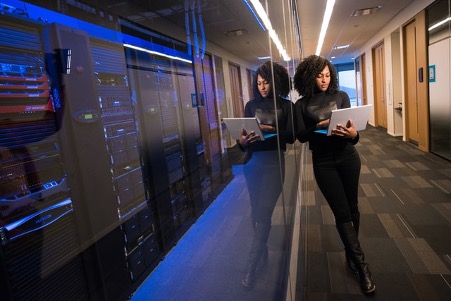Tony Hai of Florida is a Fintech CIO and contributor to several business publications. In the article that follows, Tony Hai discusses how the role of CIO has evolved and is now more encompassing than ever.
The Chief Information (CIO) role has evolved from managing a company’s internet technology to developing a company’s digital transformation strategy and creating a “digital culture and mindset” – according to Tony Hai of Florida, from the C-suite to all members within the organization.
Tony Hai of Florida notes that the IDG 2020 State of the CIO report says that 9 out of 10 CIOs felt that their roles had expanded well beyond “traditional” IT responsibilities, such as selecting the technology and software, and overseeing the security and safety of its computer networks.
They are taking more strategic roles, such as leading the digital initiatives and identifying opportunities to use technology to improve operations, lower costs, and increase sales. Tony Hai says this is especially true in industries that are going through radical digital disruption (such as retail, financial services, and media and entertainment).
Why is the CIO role changing?
Tony Hai of Florida explains that the CIO role has evolved because of what the World Economic Forum called “The Fourth Industrial Revolution”. The internet – and the merging of different technologies like robotics, artificial intelligence, quantum computing and more – have transformed the way businesses work, and what consumers expect.
Here are just some of the technological disruptions, and how that has impacted the role of the CIO.
Technology has impacted all businesses processes
Production, procurement, logistics, accounting, sales and marketing, customer care—every aspect of business in every industry now uses some form of technology. Tony Hai of Florida explains this can be as basic as keeping digital archives, to cutting-edge advances like machine learning and Internet of Things.
As the company’s “tech expert” the CIO is expected to stay on top of the latest trends and see which technology is worth adapting, according to the company’s business goals and resources.

Technology has blurred the lines between physical and digital
Tony Hai reports that remote work and e-commerce were already on the rise before the COVID-19 pandemic but have now become part of the “New Normal”. Companies need to adjust their operations (or even their business model) to accommodate a combination of offline and online transactions.
The CIO not only implements the new technology but has to help change the company mindset and culture to become more digital-savvy, and even digital-centered.
Technology has created new business challenges
While technology provides many benefits and opportunities, it also raises new concerns and challenges, such as data security, cloud migration and management, integration of different platforms, modernization of legacy systems, and more.
Tony Hai of Florida says integration is also a major concern. For example, one of the biggest problems of any company in the process of digitalization is how IT and OT systems are often deployed and managed separately, leading to inefficiency and miscommunication.
The CIO is responsible for managing the risks and costs of adapting new technology, ensuring proper deployment and training, and troubleshooting potential vulnerabilities. Tony Hai explains this must be assessed against the company’s current resources, as well as any future needs or growth.
Companies need a digital-first culture to survive
Tony Hai of Florida says the most successful companies don’t just implement a particular technology, but pro-actively develop a digital-first culture. This encourages values learning, communication, independence, and the integration of many processes that used to operate in silos.
For example, sales and marketing department will need to coordinate their offline and online activities, to ensure that customers don’t have a disjointed experience. Tony Hai says they must also work closely with the data analytics team, to know which campaigns or leads will work.
The CIO must spearhead efforts to inform, educate and train the employees about new software and technologies, and most importantly, get the buy-in of everyone involved. Even the best technology will fail if it is not used properly and regularly, and so it is necessary to oversee implementation and get feedback from users.
What skills and experience does a CIO need to have?
Tony Hai of Florida explains that a CIO is expected to have several years of experience in internet technology. An IT or computer engineering background is not necessary, especially if the person has demonstrated the expertise acquired from past jobs and projects.
Aside from technical know-how, the CIO must also have leadership abilities, an understanding of business processes, and the ability to align technology to the company’s objectives, resources and needs.
The CIO must also have strong communication and collaboration skills and be able to explain technology in “layman’s terms” in order to get the buy-in of company leaders, employees and stakeholders according to Tony Hai.
In this way, the CIO is not only the expert in technology but the leader in a company’s digital transformation and innovation.








